Kohlrabi, also known as the German turnip or turnip cabbage, is a hardy biennial plant that is usually grown as an annual plant. The plant belongs to the kale and cabbage family but tastes similar to a turnip. For most of you, Kohlrabi will be a novelty vegetable that you encounter in the produce section but never dare to try it. It can be eaten raw as well as it can be cooked in stir-fries, soups, or casseroles. It is not only very easy to grow but is also super nutritious and tasty. Kohlrabi is usually available during the spring in three variants purple Vienna, Grand Duke, Early White Vienna.If you are interested in growing your own Kohlrabi, then this article is for you. Here we talk about how to grow kohlrabi, when to harvest kohlrabi , growing kohlrabi problems much more.
So let start…
How to Grow Kohlrabi
Kohlrabi Growing Technique
Soil Type and PH Level
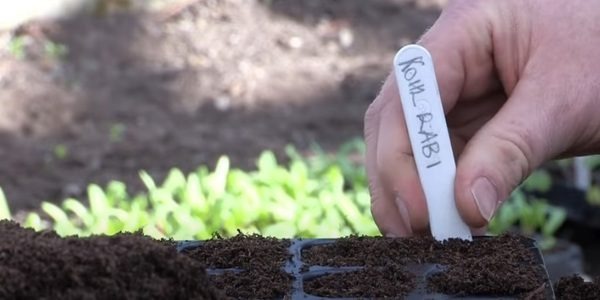
Before moving on to the growing technique of this plant, it is important to understand that the soil plays a very important role in the way Kohlrabi grows. Typically, Kohlrabi prefers well-worked, well-drained soil rich in organic matter with pH value within the 5.5 to 6.8 range.
Kohlrabi Growing Time
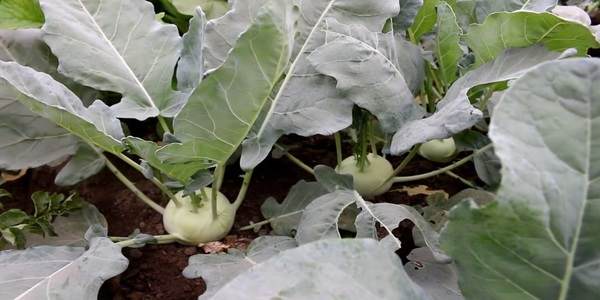
Since Kohlrabi is a cool-weather crop, you have to plant the seed around 3 to 4 weeks before the last average frost date in spring. An average Kohlrabi plant requires 1.5 to 2 months to reach maturity. Hence, while planting the vegetable, make sure you plant it such that it can be harvested before the temperatures rise above 24 degrees Celsius.
Planting and Spacing
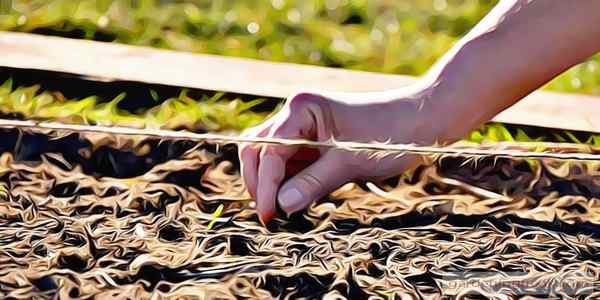
Like in most vegetables, planting and spacing are critical to a Kohlrabi as well. The seed should be planted half an inch deep. Any less than or more than this can hinder root production. Apart from this, each plant should be at least 1-inch parts if you want to grow seedlings. Once the seedlings are grown, you will have to transfer them to other areas. While planting the seedlings, plants in a row should be 5 to 8 inches apart, and each row should be spaced 18 to 24 inches apart.
While planting the Kohlrabi, make sure you don’t plant it with pole beans, strawberries or tomatoes.
Kohlrabi Fertilizer
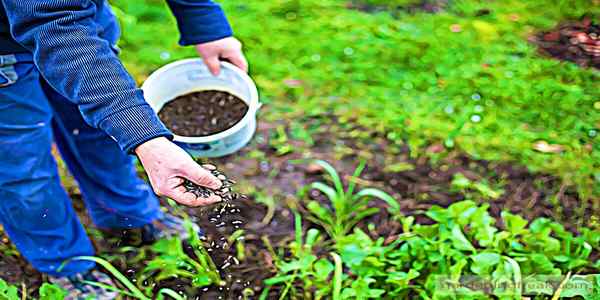
Kohlrabi plants are heavy feeders, which mean they require a number of minerals and nutrients from the soil to grow up properly. Instead of using chemical fertilizers, it is advised that you opt for organic fertilizer like compost or manure. Before planting the Kohlrabi, seed makes sure you mix organic fertilizer in the soil properly. Nitrogen rich fertilizers are not recommended for Kohlrabi since they are known to inhibit growth. After planting, it is advised that you fertilize the soil every two to three weeks. Instead of adding chemical fertilizers, go for the ones that improve the tilth of the soil. Hence, during the growing period, dressing the soil with compost every few weeks will speed up the maturity process. You can also check this article about how to fertilize these types of vegetable after plating for more detail .
When to Harvest Kohlrabi
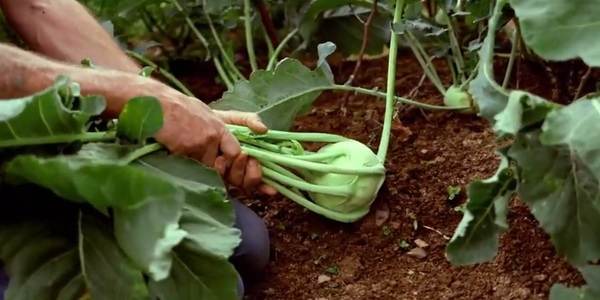
As a Kohlrabi plant grows and ages, it becomes tougher, and the texture becomes more rigid. Hence, it is important that you harvest the vegetable on time. Of course, you can experiment with the size and texture if you want to. In general, gardeners wait for the plant to be three or four inches in diameter, and after that, they either pluck it or slice it at the bottom. At this size, the Kohlrabi is ideal for both, eating in a salad or cooking. If you don’t want to eat your Kohlrabi raw, you can wait for it to grow up to four inches wide. It tastes equally good when cooked. However, if you let it grow past this phase, its texture and sturdiness will make it inedible.
Nevertheless, if you want to harvest your own seeds, then it is advised to let the vegetable grow up to five to seven inches in diameter. As far as storing the bulbs are concerned, you can keep them in the refrigerator for up to a month and in the cool and dry pantry for up to a week.
Growing Kohlrabi Problems
Although growing a Kohlrabi is relatively easy, there are a few problems that you might face. However, each of them can be prevented with a little care.
Fungus
Since these are cool weather plants, over watering the roots can result in fungus gnats, which not only kills the seedlings but also prevents other seedlings in the area from growing. To prevent this, you should use well-drained soil.
Cutworms
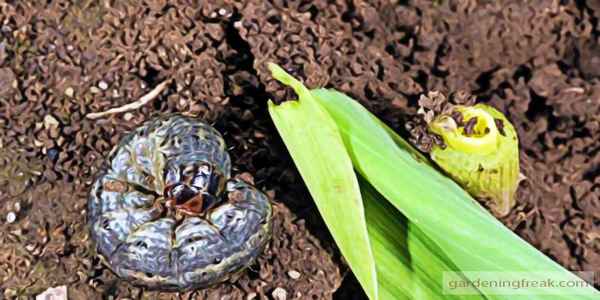
If the soil inhabits cutworms, they will eat up the plant stems as soon as they grow out. To prevent this, you can either use pesticides or put a 3-inch paper collar around the stem of the plant.
Cabbage Maggot

These small gray-white worms eat the roots and prevent the seedlings from emerging. You can deter them easily by applying lime to the soil and plant or by covering the base around the plant with wood ashes.
These are the most common issues you will face with Kohlrabi. Nevertheless, this is not the end of the list. You might see wilted leaves, leaves with yellow blotches, or holes in the leaves. Every issue is due to a pest. In this case, you can use pesticides. It’s better to use organic ones like neem oil.
Growing Kohlrabi Indoors in Container
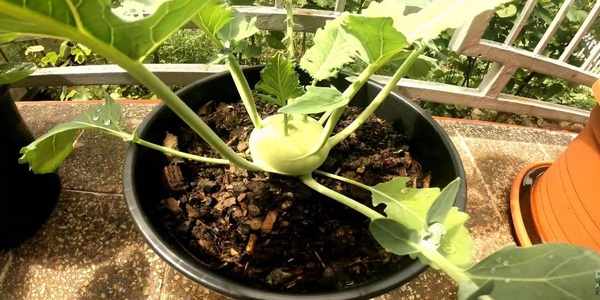
Growing a Kohlrabi indoor in a container is not at all a difficult task. All you need is the correct soil composition and 6-inches long container. Since Kohlrabi is a long-rooted plant, you have to ensure the plant has enough space in the container.
Usually, the following soil composition is used while planting a Kohlrabi:
- Garden soil – 40%
- Cocopeat – 30%
- Vermicompost – 30%
While mixing the soil, to prevent fungi you can add fungicide or neem cake powder. Make sure you check the required mixing amount before adding the fungicide.
If you have a seedling, all you have to do is bury it in the container till the first leaf node. If you have a seed, just slightly bury it in the soil and spray water on it. The seed will germinate in 10 to 15 days. Don’t forget to add fertilizer to the soil after every few weeks. Kohlrabi requires a lot of nutrition to grow properly. The harvesting of an indoor Kohlrabi is similar to an outdoor Kohlrabi.
Kohlrabi Care Guide and Tips
Kohlrabi don’t require a lot of care while growing up. However, there are a few things you can do to ensure proper growth and good taste.
Fertilizer
The first time a fertilizer should be used is when you see the bulb coming out. At this time, carefully remove some of the soil. Make sure you don’t break any roots. Fertilizers like seaweed fertilizers, mustard cake powder and vermicompost work very well for Kohlrabi. Once you have added the fertilizer, add the soil on top of it and water the plant.
Watering
In early days of the plant’s growth, don’t water the plant a lot. Let the soil dry a little before watering the plant again. Also, use a shower head or your hand to disperse the stream of the water while watering.
Once you see the vegetable forming, start watering more frequently, don’t let the soil dry completely between watering cycles. Over watering in early stages attracts fungal diseases which will kill your plants.
Frequently Asked Questions:
Some of the frequently asked questions regarding the Kohlrabi include:
Does Kohlrabi Grow Back After Harvesting?
The Kohlrabi fruit will not grow back again once it is cut but the plant will keep getting new leaves. Thus, if you want to keep harvesting Kohlrabi leaves, you might want to cut the bulb out instead of pulling the roots with it.
Where does Kohlrabi Come From
This uncommon looking vegetable comes from northern Europe. However, it was only known to man five hundred years ago. It name comes from the German word “kohl” meaning cabbage and “rabi” meaning turnip.
Are Kohlrabi and Turnips the Same
No, both are completely different vegetable. Although both are cool-season vegetables with edible bulbs. Turnips grow underground like potatoes and carrots. The Kohlrabi grows more like a cabbage above the ground. Their flavors do match a little though.
Conclusion
The best part about growing a Kohlrabi is that it will not keep you waiting for long. Just within weeks of planting you will see the fruit developing and within 1.5 months the fruit will be ready for harvest. It is an extremely nutritional fruit that can be used in salads, curries as well as in soups and stews. Growing a Kohlrabi is pretty easy, apart from an enriched soil, the plant does not demand a lot and you can even grow it in a container. There are total three types of Kohlrabi and they all can be grown inside the house in a properly sized container. Hence, even if you don’t have a garden you can enjoy the tasty vegetable. Some gardeners even grow Kohlrabi twice a year by managing the temperatures they get indoors. However, these plants are biennial plant by nature. You can also harvest their leaves for salads. That’s all for today. Hope our this article will help you to know how to grow how to grow kohlrabi.















